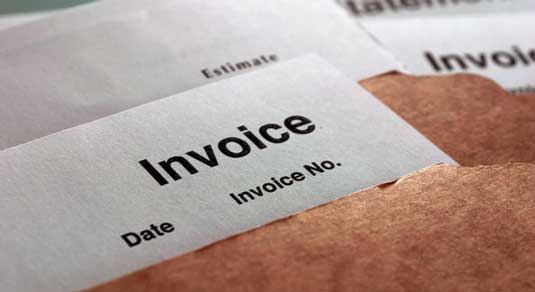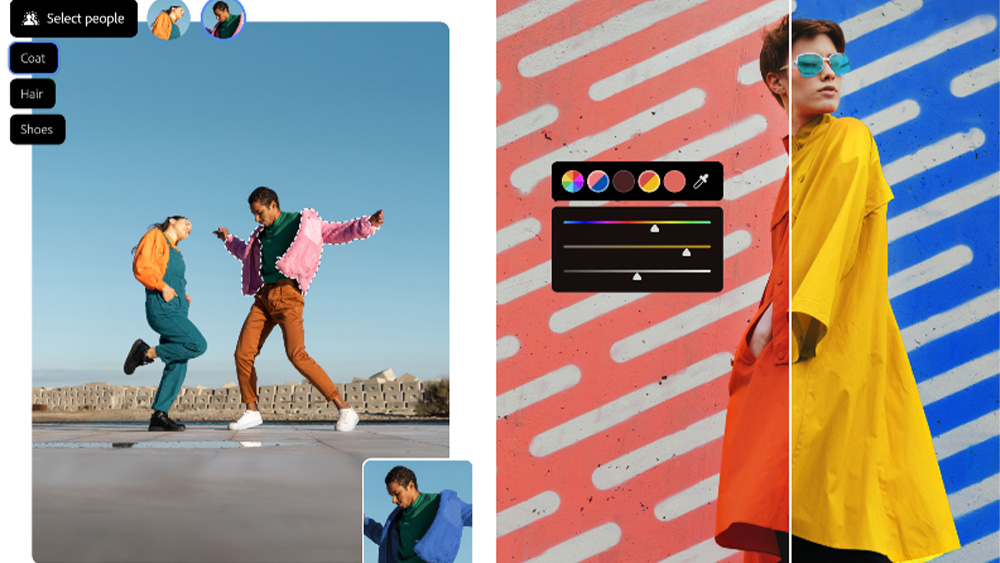Getting clients to pay: 10 tips for freelancers
How do you make sure you get paid for your design work? Joel Hughes reveals all.
Clients and pricing are two subjects very close to my heart – in fact, I talked about them at the Port80 webconference in Newport in May 2012. And let's be clear here, I feel qualified to speak on the subject as I've made pretty much made every mistake under the sun when it comes to the topic – it's a miracle I'm still in business!
Well, that's maybe overstating it, but the truth is that I managed to learn from my mistakes and have the scars to prove it. And I'm hoping this article will help you as well.
My company Jojet was set up in 2001 when I was a freelancer with agencies but it wasn't till about 2005 that I started to sidestep the agencies and deal with companies directly. This was when the fun began as I realised that, whilst I knew about the web and so on, dealing with business, pricing, negotiating, etc was a completely foreign land to me.
So here I'm going to share with you some of the harsh lessons I learned. And while they took place within the world of web design, they apply equally to any creative endeavour where clients and pricing are involved...
01. Learn to say no

You don’t have to work with every client that comes along. Yes, in the early days this seems like a luxury, but bad clients are not good for your business.
They'll be poor payers, difficult to work with and they'll hardly turn out to be great advocates for your services. They'll sap your energy and destroy your joy. Worst of all, they'll eat up valuable time which would be better spent with clients who appreciate you.
Trust your gut. Sniff out the rotten apples early, spare yourself some pain and show them the door.
Get the Creative Bloq Newsletter
Daily design news, reviews, how-tos and more, as picked by the editors.
02. Get your pricing right
In my agency/freeance days pricing was simple. My day rate was, say, £250 with the only grey area being what actually constitutes a 'day' (some agencies want you there 24 hours!).
On first dealing with actual client proposals I'd think, "okay, that looks like about five days work all-in", and tell the client £1250 (+VAT). Only to hear their jaw hit the floor: "But X only quoted me £275!"
Don't undercharge
I took this to mean that, somehow, I was wrong; that I'd got my pricing totally wrong, that perhaps the business world was different to agencies. Or perhaps I wasn't that good and I was a bit slower than some other web developers. Perhaps they could do it in four days. Or three. Or one.
So I would adjust my quote accordingly. Which meant that structured pricing went completely out of the window. You would be simply plucking figures out of the air when it comes to proposal; adjusting it to the whim of the client. And if you got the job you'd have to hunker down to the bitter end because, however crap the money, you just had to get paid – you'd come this far...
Prices are relative
Lesson: in this crazy world we live in, pricing is relative; what's cheap to one person is expensive to another. The supermarkets sell economy baked beans as well as truck loads of Heinz; there is a vast difference in the price but they are both basically baked beans in tomato sauce.
YOU set your price. Don’t get into a haggling match in potential clients. If the client cannot afford your service then they cannot afford you – simple as that – do they haggle with the person behind the till at Tesco? No? I thought not.
03. Be happy with talking about money

In my early days I hated talking about money – in fact I would avoid it and end up having meetings, etc before the subject ever came up.
Result? An awful lot of wasted time with clients who simply couldn't afford my services. Time which you cannot get back and time which should have been spent with clients who can afford you or time better spent developing your business.
Lesson: from the very outset I'll let potential clients know either a day rate or the ball park which a project costs. This acts as a perfect filter at keeping the zero/unrealistic budget brigade away from my attention.
04. Frame your prices
Most potential clients have pretty much no clue about what goes into design work, especially in my area, web design. I'm not saying that as a criticism – it's just a trait I've spotted. They know their business but no little about the web; fair enough. And it shouldn't be a surprise that they have no idea how to ask you about prices, and so on.
We've all heard about clients asking: "How much is a simple, five-page website?". But after the laughing stops, it's really our responsibility to help the client understand.
We've already covered being comfortable talking about prices but this tip is more about giving them an early estimate of the overall project cost. You could do this either:
- a guesstimate on number of resource days
- the cost of a similarly sized project
- off-the-shelf solutions
Estimates are not quotes
Please note I've said an early estimate here – this is not a quote. Initially I just want the client to get a ball park of the range of prices – does this fit with their budget? If not, can we do something smaller?
Oh, and there's a school of thought as well that if the client doesn't wince a little at your prices then you are not charging enough.
05. Consider packaged solutions

The 'off-the-shelf solutions' point I made previously demands a bit more attention. I don't sell shrink-wrapped websites but, over time, I've spotted some commonality between certain solutions offered to clients – e.g. this is a small content managed website for a sole professional, or this is a larger, more complex website for companies. Or, this company also needs a WordPress blog set up with hands on training.
So what I did was to create some packaged solutions where I could say, "this is what you get for X price", and talk them through the features/benefits, and so on. This approach means that it's very clear from the outset what the client is getting – and it really helps keep out one of the web design demons... scope creep!
Opt in or out
The packages also allow the client to qualify themselves in or out; questions like, "oh but we need X or Y", can be met with, "sure, in which case we can offer you A and it will cost B".
Note, I'm not talking about GOLD, SILVER, BRONZE websites here – perhaps this is even something you make no mention of on your website. Perhaps it's just some pricing guidelines you have in your back pocket when you're trying to establish budget with a client.
06. Quotes are not the final price

One of my early mistakes I made with clients was spending too much time with them preparing quotes, hand-holding them through what they actually needed.
The mistake I was making was that this time was unbilled and that, if they didn't go forward with the project with me, they had some tangible benefit (my knowledge) and I had wasted billable time.
The discovery phase
So what I do now is to produce a guesstimate but make it clear to the client that IF they decide to go forward, we will begin proper scoping phase where the problem domain will be more throroughly investigated. I call this the 'discovery' phase and yes, this time is billable.
And yes, I make the client aware that if new things crop up as part of the discover phase then we'll additionally quote for the extra work required to deliver them. The client can decide if they want to include that element or not.
Your time is valuable – if you do not respect it how do you expect your clients to?
07. Draw up a proper contract
Sensible clients understand things like contracts and terms and conditions. Get them to agree to these up front, at the start of the project to save pain later on.
State things like:
- what happens if the client cancels the project
- what happens if the clients becomes too busy/incommunicable and the project stalls
- what happens with scope creep
You never want these clauses to have to be invoked but, for the sake of your business, you need to cover your back.
08. Consider kill fees

Say you've been working with a client, agreed to go ahead, done some painstaking specification and research work, perhaps even created an early design, maybe you've even billed for work to date (as agreed in your payment plan). However, the client then says that they're having second thoughts and wants to pull out of the project.
Now you might think, "Fine, I've been paid up to this phase so that's cool", but please bear in mind the following: you have budgeted for this work, you may have even lined up resources to help, and you stopped looking to fill your pipeline for this period because this work was agreed. And now it's not there.
In for the kill
This is where a 'kill fee' comes in. Whether the kill fee is for the total remaining project cost or a percentage is up to you. But you need it to help cover the work vacuum which this client has created.
And no, just in case you were wondering, I've never had a client pull out. But I'm sure prepared for it.
09. Define the delivery process clearly

We've been leading up to this one... I have a clearly defined project delivery process. This process has evolved over the broken husks of projects where I have delivered but have ended up out of pocket. Where I have felt hijacked to add in functionality which has proved useful but was never agreed. This is deadly to your business.
My process clearly states:
- what it will be like to work with me
- what the client can expect
- what I expect of them
- what the project phases are and what that means
- when I expect to be paid
- how new functionality requests are handled
The beauty of this approach is twofold:
- it clearly states how I operate, banishes a lot of uncertainty and helps avoid scope creep issues
- it filters out clients who cannot/do not want to operate to my process
And point 2 is crucial. Whenever a client has adjusted my process without good reason, my spider senses have tingled and things have gone wrong. Whenever your brain tries to kid you with, "it'll be alright, I'll pull an all-nighter", please translate that to, "this project will turn into a soul-eating nightmare which will make you want to give up the web".
If potential clients cannot work to my process then we part company. And I know that I have saved myself (and them probably) a bucketload of stress.
10. Read this book

Design is a Job, by Mike Monteiro, is a fantastic must-read, whether you're a freelancer or if you run an agency. It certainly brought to light many things I'd been mulling over for a while and gave a name to it.
Further reading
I hope you find this article useful and please shout out with any of your thoughts, suggestions, tips or horror stories! Oh, and here's a list of useful resources about clients and pricing that I found along the way.
Also check out:
Articles
- Freelancing: be upfront about money
- The ultimate collection of freelance design tips
- The biggest freelance mistakes... and how to avoid them!
- Contracts 101: abuse of relationships
Books:
- The Obvious: All You Need to Know in Business. Period by James Dale
- The Business of Design by Joseph DeSetto
- The Business side of Creativity by Cameron S. Foote
Words: Joel Hughes Main image: ilovedust
Joel Hughes is an internet consultant and director of Jojet, a web design and internet strategy studio based in Newport, South Wales. He blogs at jojet.com. This is an updated version of an article that previously appeared on Creative Bloq.

Thank you for reading 5 articles this month* Join now for unlimited access
Enjoy your first month for just £1 / $1 / €1
*Read 5 free articles per month without a subscription

Join now for unlimited access
Try first month for just £1 / $1 / €1

The Creative Bloq team is made up of a group of design fans, and has changed and evolved since Creative Bloq began back in 2012. The current website team consists of eight full-time members of staff: Editor Georgia Coggan, Deputy Editor Rosie Hilder, Ecommerce Editor Beren Neale, Senior News Editor Daniel Piper, Editor, Digital Art and 3D Ian Dean, Tech Reviews Editor Erlingur Einarsson, Ecommerce Writer Beth Nicholls and Staff Writer Natalie Fear, as well as a roster of freelancers from around the world. The ImagineFX magazine team also pitch in, ensuring that content from leading digital art publication ImagineFX is represented on Creative Bloq.
